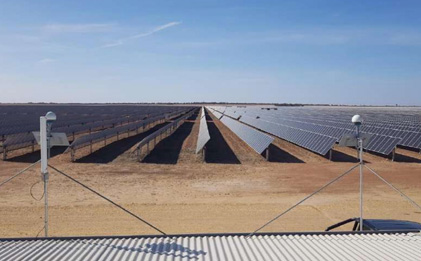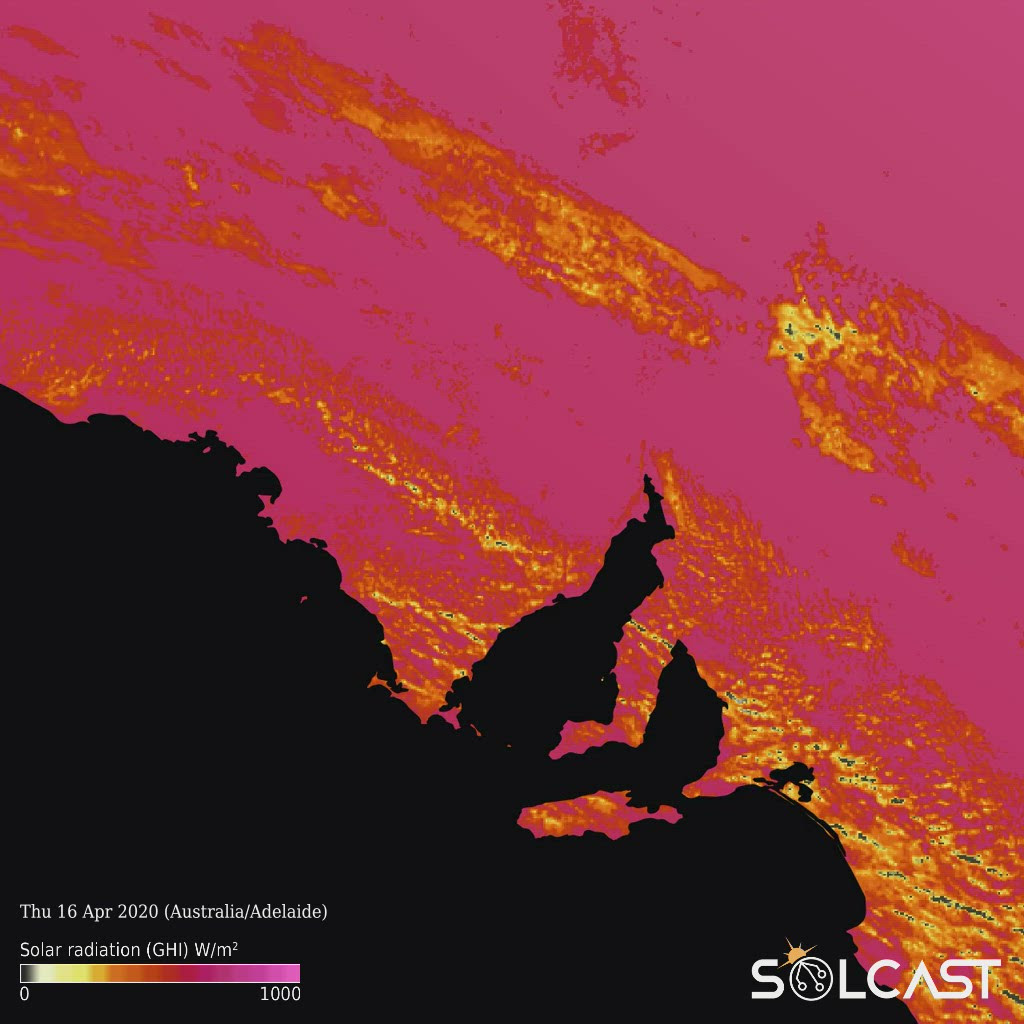Summary
The Real-Time Operational PV Simulations project provided low voltage network operators (DNSPs) with high resolution solar energy forecasting data mapped to their electricity networks.
Need
The inherent intermittency of Australia’s 1.8 million small-scale solar PV systems can create problems on distribution networks. Maximum penetration levels of solar PV are already being reached in some areas of Australia, with long fringe-of-grid lines most vulnerable.
Current sources of solar PV system power output information are time-lagged, only allowing for reactive decision making, which is too late for effectively managing high penetration solar PV variability.
Learn more
Project innovation
The Real-Time Operational PV Simulations project deployed an operational framework for the prediction of power output from solar PV, which groups total power generation according to low voltage network assets (e.g. zone substations). This operational framework combined solar PV installation data (locations, capacities), along with electrical network information (which zone substation or feeder line the PV site is connected to) provided by the DNSP partners, to make near-term predictions of the power output from those PV systems.
Forecasts were created by operational solar forecasting systems developed and maintained by a commercial entity (Solcast Solar & Storage Modelling Pty Ltd). Solcast is a partner in the ANU project and was engaged to provide global coverage of rapid update solar forecasting technologies, which detect, track and predict the future positions of cloud cover through the use of weather satellites and numerical weather models. In the Australian region, services for cloud cover imagery were provided by the Himawari 8 satellite. Solcast provided forecasts of PV power output through solar radiation forecasts produced by these operational systems, which were converted to power output predictions via proprietary PV modelling algorithms.
These innovative solar forecasts helped DNSP monitor the real-time solar generation across the distribution networks, and the forecasting technologies providedthem with enough lead-time to proactively manage solar PV-induced voltage fluctuations.
Benefit
This project focused on identifying the use cases for solar forecasting data in low voltage networks, to enable network service providers to manage solar PV integration challenges with solutions such as energy storage technologies and demand management. This has the potential to allow higher penetrations of solar PV on Australian electricity networks.





